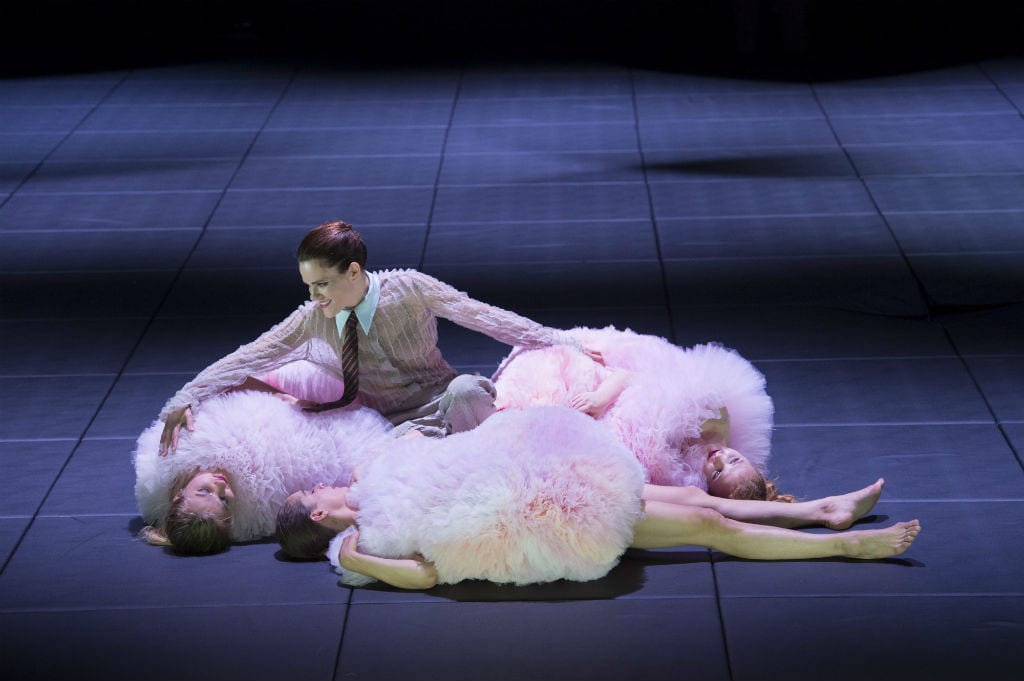Thirty minutes outside of Salzburg, on a little strip of land floating in the middle of a river in the quaint Austrian town of Hallein, the Salzburgsfestspiele hosts a rendition of Frank Wedekind’s Lulu. The original 1894 manuscript tells the ‘Monster Tragedy’ of a society “riven by the demands of lust and greed” (Banham, Martin, 1998). The titular Lulu spends the acts seducing and marrying a variety of men, and one woman, as her fortunes rise and then dramatically fall, culminating in her murder by Jack the Ripper. Athina Tsangari has taken this fractured tale of humanity’s primal instincts for lust and greed and added a surrealist twist to the images. Emphasizing the notion of three – three Fates, three Furies, the threes of psychology and philosophy (Plato’s Tripartite Soul and Freud’s Id-Ego-Superego) – as the director tells it, we have three actresses playing Lulu simultaneously (Anna Drexler, Isolda Dychauk and Ariane Labed), many times acting and speaking in tandem, though increasingly taking on their own personalities, physicalities, and lines as fractured parts of the seductive woman.
The show becomes an almost meta interpretation of the original play, with the actors and staging subtly inducing the same polar criticisms that have followed the play from its origin: is Lulu a misogynistic tale of the greedy, lustful nature of the femme fatale or is it a statement on how men in a patriarchal society can write their own wants and desires onto a woman, ignoring her own thoughts and drives? Lulu’s staccato movements, a zombie/robot fusion, gives the character a blankness and non-autonomous veneer, as though her movements were scripted and could be written over by anyone else’s prerogative – something we see hinted at, as the men bring her new costumes or even occasionally direct her movement. And yet, as the play moves on, those roles take the occasion to reverse, with Lulu directing the men or seeming more fluid in her own actions.
Though sometimes Lulu and her conquests felt overwhelmed by the vast space of the stage or uncertain in thematic direction, it is the surrealist reinterpretation of the production that I found to be its most enjoyable component. The stage opens completely covered in suspended semi-opaque black balls of varying size and at varying heights. These balls are incorporated throughout the play ingeniously both on their own and as floating projection screens. Through them we get a surrealist twist on the play, with a literal wink to Buñuel’s famous eye in the form of a video display of various moving eyeballs. The incorporation of the videos with echoing drums and other sound effects creates a trippy buzz and building frenzy, truly bringing to mind the animalistic fury of Lulu and the society Wedekind condemned.

